
Mastering the Middle Ground: The Power of ESL for Intermediate Students Worksheets
The journey of learning English as a Second Language (ESL) is often likened to climbing a mountain. Beginners are at the exciting base, making rapid progress with every new word and phrase. Advanced learners are near the summit, refining nuanced expressions and mastering complex structures. But what about those in the vast, often challenging, middle ground? Intermediate ESL students find themselves beyond the basics but not yet fluent, often experiencing a plateau where progress feels slow or even stagnant. This is precisely where meticulously designed ESL for intermediate students worksheets become an invaluable asset, providing the structured practice and targeted development necessary to bridge the gap to advanced proficiency.
This comprehensive article will delve into the critical role of these worksheets, exploring why they are essential, what key components they should include, how to effectively design or select them, and strategies for integrating them into a dynamic learning process.
The Intermediate Challenge: Why Worksheets Are Crucial

Intermediate ESL learners possess a foundational grasp of English. They can understand common phrases, engage in simple conversations, and read basic texts. However, they often struggle with:

- Grammar Nuances: Moving beyond simple present/past to conditionals, passive voice, reported speech, complex modal verbs, and perfect tenses.
- Vocabulary Depth: Acquiring less common words, collocations, idioms, phrasal verbs, and understanding shades of meaning.
- Fluency and Spontaneity: Hesitation in speaking, limited range of expression, and difficulty sustaining longer conversations.
- Listening Comprehension: Understanding faster, more natural speech, identifying accents, and inferring meaning.
- Reading Comprehension: Grappling with authentic texts, complex sentence structures, and academic or business vocabulary.
- Writing Cohesion and Coherence: Structuring paragraphs, developing arguments, and using appropriate linking words and phrases.

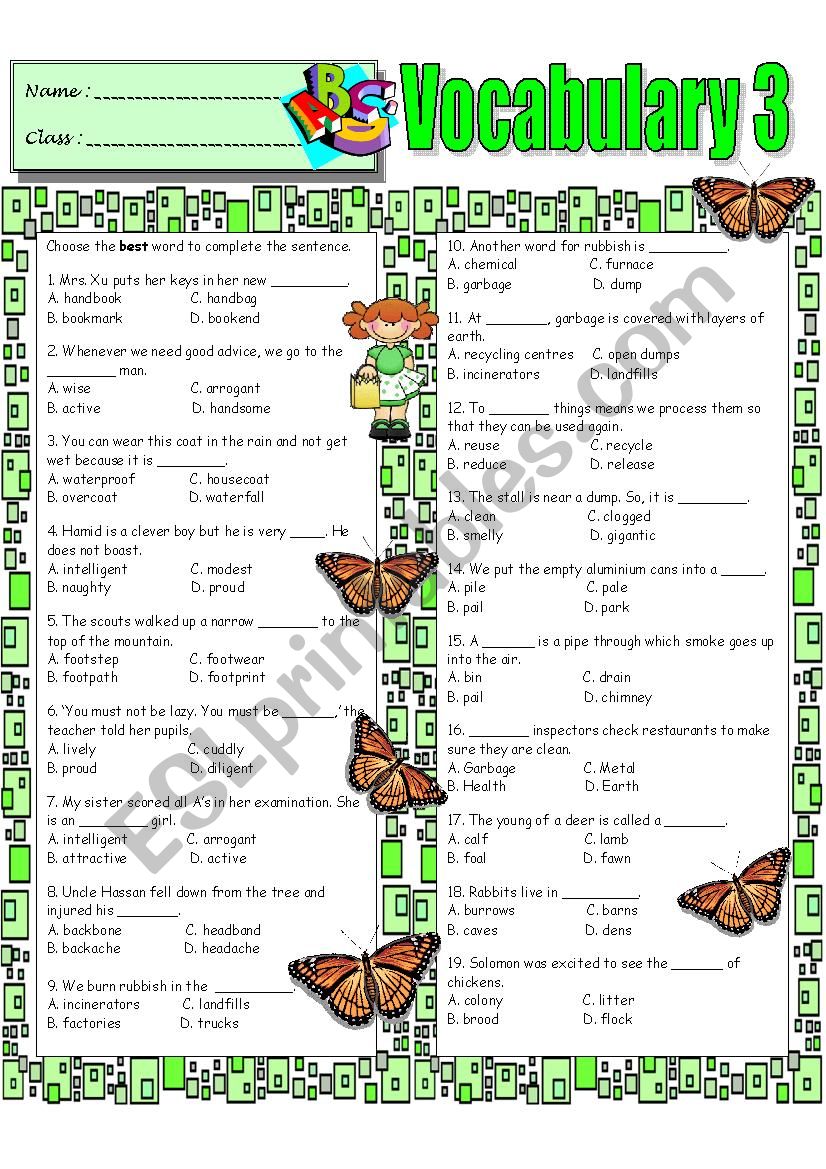
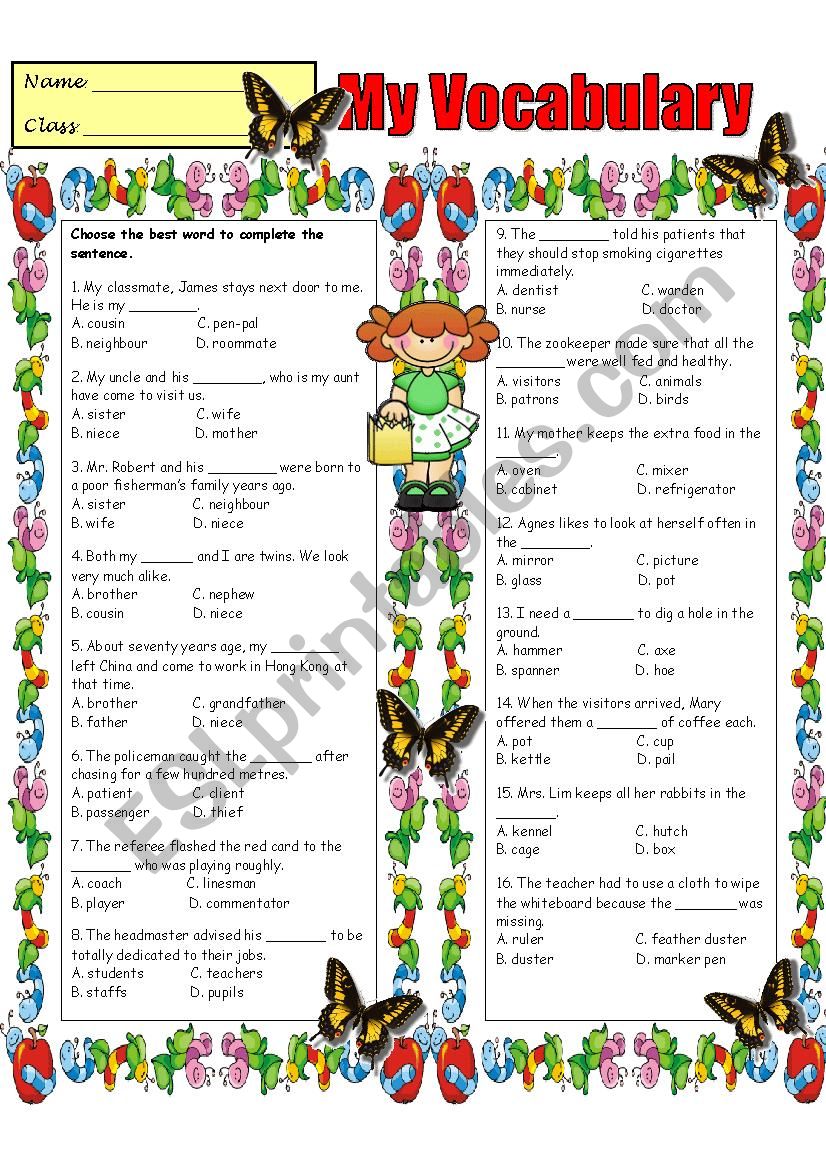

Without targeted intervention, these challenges can lead to frustration and a lack of motivation. ESL for intermediate students worksheets offer a systematic solution, breaking down complex skills into manageable, actionable exercises that reinforce learning and build confidence.
The Power of Well-Designed Worksheets
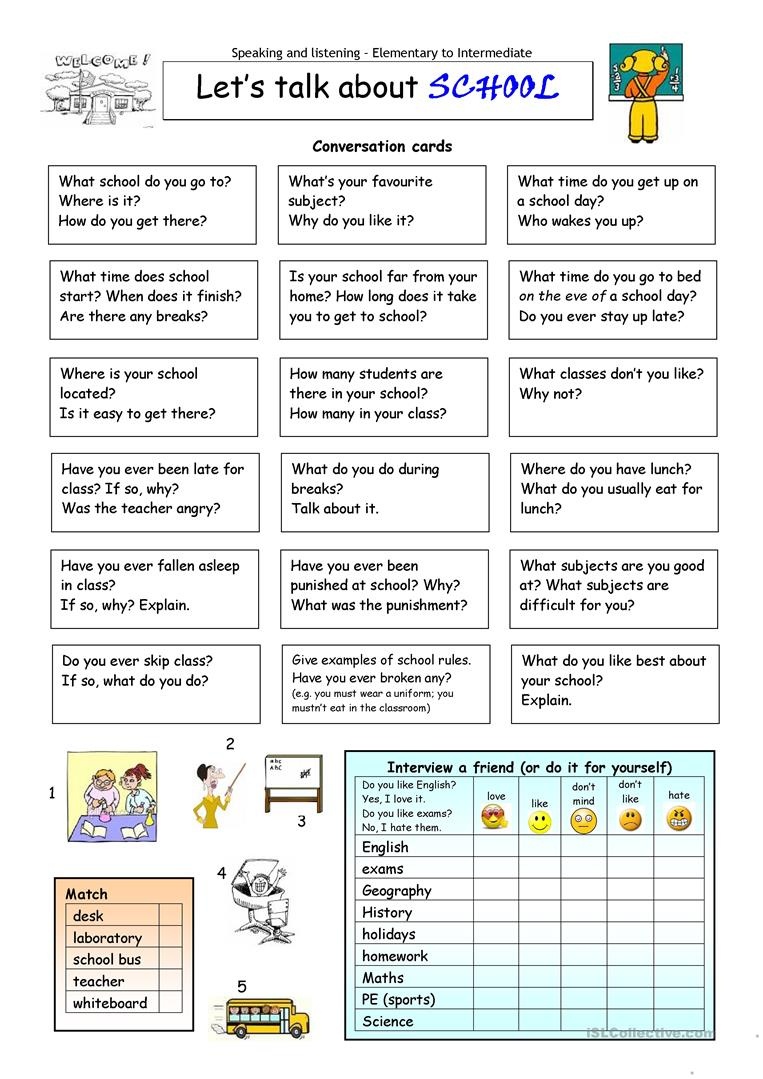
Worksheets, when used effectively, are far more than just busywork. They serve multiple vital functions:
- Structured Practice: They provide focused exercises for specific grammar points, vocabulary sets, or language functions, ensuring systematic learning.
- Reinforcement: Repeated exposure to concepts through varied exercises helps consolidate understanding and move knowledge from short-term to long-term memory.
- Self-Assessment: Many worksheets include answer keys, allowing students to check their own understanding and identify areas needing more attention.
- Targeted Skill Development: Unlike general conversation, worksheets can isolate and hone particular skills, such as using gerunds and infinitives or understanding cause-and-effect relationships in a text.
- Variety and Engagement: A diverse range of activities (gap-fills, matching, true/false, multiple choice, sentence transformation, short answer questions, writing prompts) keeps students engaged and caters to different learning styles.
- Progress Tracking: Completing worksheets provides tangible evidence of progress, boosting student morale.
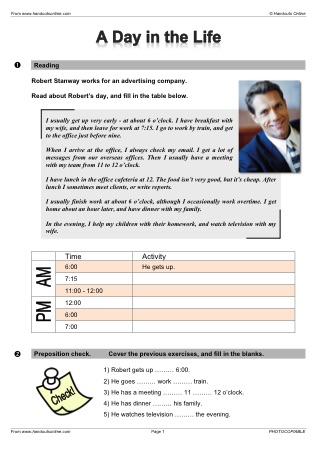
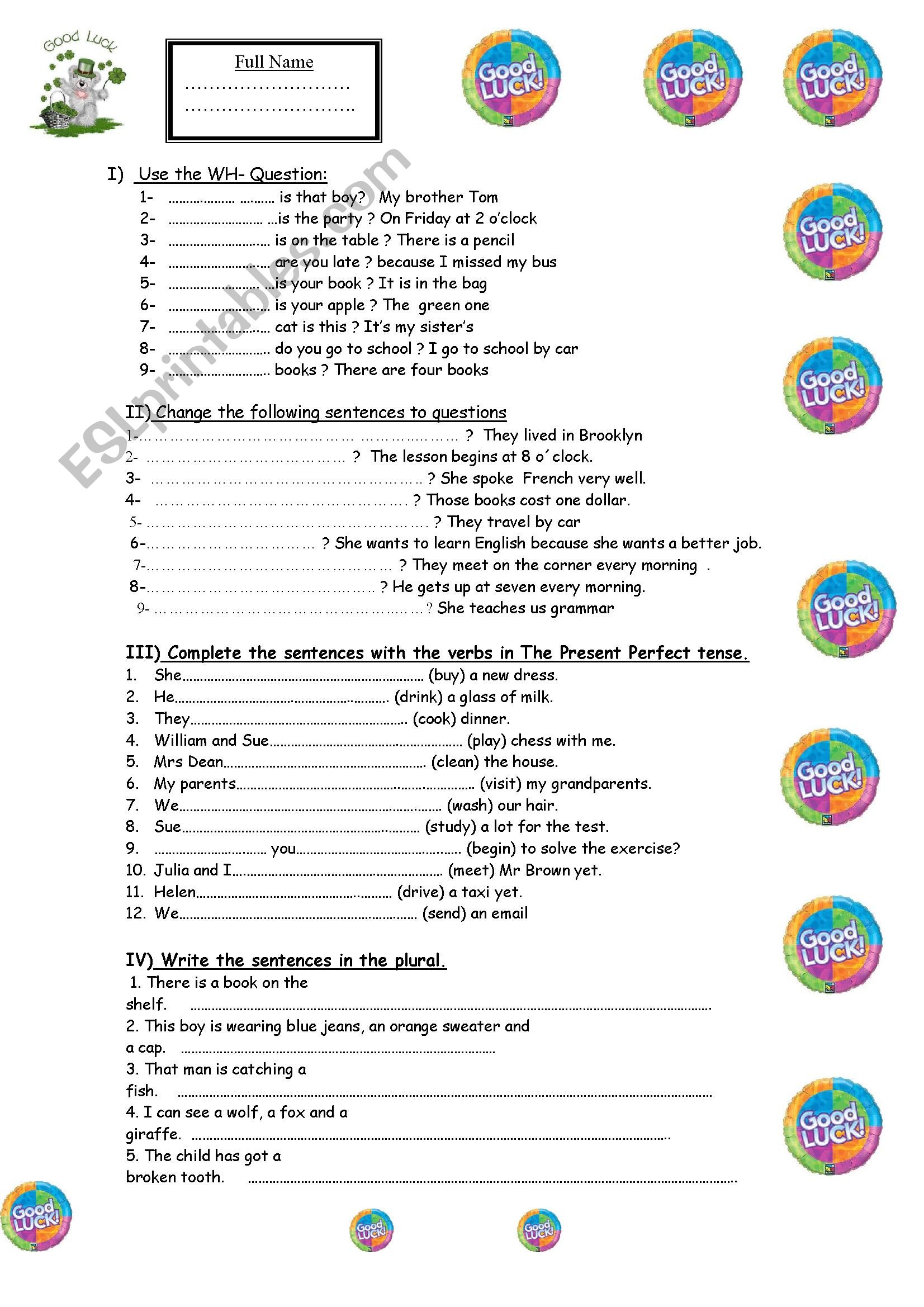
Key Components of Effective ESL for Intermediate Students Worksheets
To be truly effective, ESL for intermediate students worksheets must address the multifaceted needs of learners at this stage. Here are the essential components:
1. Grammar Worksheets: Beyond the Basics
Intermediate grammar focuses on complexity and nuance. Worksheets should cover:
- Advanced Tenses: Present Perfect Continuous, Past Perfect, Future Perfect, Future Continuous, and their appropriate usage in context.
- Conditionals: All four types (zero, first, second, third, and mixed conditionals), focusing on meaning and form.
- Passive Voice: When and why to use it, transformation exercises.
- Reported Speech: Direct to indirect speech transformations, focusing on tense changes and reporting verbs.
- Modal Verbs: Nuanced meanings of modals (e.g., probability, obligation, advice, speculation).
- Phrasal Verbs: Common phrasal verbs, their meanings, and usage in sentences.
- Gerunds and Infinitives: Rules for using verbs followed by gerunds or infinitives.
- Relative Clauses: Defining and non-defining relative clauses.
- Connectors and Discourse Markers: Practice with transition words and phrases for coherent writing and speaking (e.g., however, therefore, in addition, moreover, despite, although).
Exercise Examples: Sentence completion, error correction, sentence transformation, gap-fills, rewriting passages using specific grammar points.
2. Vocabulary Worksheets: Expanding Lexical Richness
Intermediate vocabulary moves beyond isolated words to collocations, synonyms, antonyms, and context-specific usage.
- Collocations: Matching verbs with nouns (e.g., make a decision, take a risk), adjectives with nouns (e.g., strong coffee, heavy traffic).
- Idioms and Figurative Language: Explaining common idioms and using them in sentences.
- Synonyms and Antonyms: Differentiating between closely related words, understanding subtle meaning differences.
- Word Families: Nouns, verbs, adjectives, adverbs derived from the same root word.
- Contextual Vocabulary: Exercises where students deduce meaning from context, or choose the correct word for a given situation (e.g., formal vs. informal language).
- Topic-Specific Vocabulary: Worksheets focusing on themes like business, travel, health, environment, technology, or current events.
Exercise Examples: Matching, multiple choice, gap-fills, sentence creation, cloze passages, categorizing words, creating mind maps.
3. Reading Comprehension Worksheets: Deepening Understanding
At the intermediate level, reading materials should become more authentic and challenging.
- Authentic Texts: Excerpts from news articles, blog posts, short stories, emails, advertisements, or simplified non-fiction.
- Main Idea and Detail Identification: Questions requiring students to identify the central theme and specific supporting facts.
- Inference and Implication: Exercises where students deduce meaning that is not explicitly stated.
- Vocabulary in Context: Understanding new words based on surrounding text.
- Text Structure: Identifying cause and effect, comparison and contrast, problem and solution.
- Critical Thinking: Questions prompting students to analyze, evaluate, or synthesize information.
Exercise Examples: Multiple choice, true/false/not given, short answer questions, summarizing, matching headings to paragraphs, identifying author’s purpose or tone.
4. Listening Comprehension Worksheets: Sharpening Auditory Skills
Listening exercises should mimic real-world interactions and expose students to various accents and speeds.
- Authentic Audio: Short news clips, interviews, podcasts, movie trailers, dialogues, or public announcements.
- Gist and Detail: Questions about the main idea and specific details.
- Note-Taking: Exercises that require students to extract key information while listening.
- Inference and Emotion: Identifying speaker’s mood, attitude, or implied meaning.
- Understanding Accents: Exposure to different English accents (British, American, Australian, etc.).
Exercise Examples: Gap-fills while listening, true/false, multiple choice, short answer questions, transcribing parts of a dialogue, matching speakers to statements.
5. Writing Practice Worksheets: Structuring and Expressing Ideas
Intermediate writing moves towards more coherent paragraphs and longer, more structured pieces.
- Paragraph Structure: Topic sentences, supporting details, concluding sentences.
- Linking Words and Phrases: Practice using transition words for coherence.
- Sentence Combining and Variation: Exercises to create more complex and varied sentences.
- Formal vs. Informal Writing: Differentiating and practicing appropriate language for different contexts (e.g., email to a friend vs. a formal letter).
- Guided Writing Prompts: Short essays, opinion pieces, descriptive paragraphs, personal narratives, summaries of texts.
- Error Correction: Identifying and correcting common errors in example sentences or paragraphs.
Exercise Examples: Rewriting sentences, ordering jumbled sentences into a paragraph, completing paragraph outlines, writing short responses to prompts, peer correction activities.
6. Speaking Prompt Worksheets: Fostering Fluency and Interaction
While speaking itself isn’t done on a worksheet, the worksheet provides the essential structure and content for speaking practice.
- Discussion Questions: Open-ended questions related to a topic, text, or audio.
- Role-Playing Scenarios: Situations requiring specific language functions (e.g., complaining, apologizing, negotiating, giving advice).
- Debate Topics: Statements to argue for or against.
- Picture Description: Prompts to describe images, compare/contrast, or tell a story.
- Information Gap Activities: Worksheets with missing information that students must obtain from a partner by asking questions.
Exercise Examples: Lists of questions, scenario cards, opinion prompts, prompts for short presentations.
Designing and Selecting Effective ESL for Intermediate Students Worksheets
Whether you’re a teacher creating your own or a student searching for resources, consider these principles:
- Authenticity: Use language that sounds natural and reflects real-world communication.
- Variety: Mix up exercise types to keep students engaged and target different skills.
- Progression: Exercises should gradually increase in difficulty, building on previously learned concepts.
- Clarity: Instructions must be clear and concise.
- Engagement: Choose topics that are relevant, interesting, and relatable to intermediate learners.
- Feedback Mechanism: Include answer keys where appropriate, or design activities that facilitate peer correction or teacher feedback.
- Differentiation: Consider including optional challenge questions or simpler alternatives for mixed-ability classes.
Integrating Worksheets into the Learning Process
Worksheets are most effective when integrated thoughtfully into a broader learning strategy:
- Pre-Lesson Activation: Use a short worksheet to review prior knowledge or introduce new vocabulary before a lesson.
- During-Lesson Practice: Incorporate worksheets for immediate practice after a grammar explanation or listening activity.
- Post-Lesson Reinforcement/Homework: Assign worksheets to consolidate learning outside of class.
- Self-Study: Empower students to use worksheets independently for review or to target specific weaknesses.
- Group Activities: Adapt worksheets for pair or small group work to encourage collaboration and communication.
- Diagnostic Tools: Use worksheets to assess students’ current understanding and identify areas that need more attention.
Common Mistakes to Avoid
- Too Easy or Too Hard: Worksheets that are not appropriately leveled can be demotivating.
- Rote Memorization Only: While some memorization is necessary, focus on contextualized usage rather than isolated facts.
- Lack of Context: Grammar or vocabulary exercises without real-world context are less effective.
- Over-Reliance: Worksheets should complement, not replace, communicative activities, speaking practice, and extensive reading/listening.
- No Feedback: Students need to know if their answers are correct and understand their mistakes to truly learn.
Where to Find and Create Quality Worksheets
- Online ESL Resources: Websites like ESL-Lounge, British Council LearnEnglish, BBC Learning English, BusyTeacher, and many teacher-run blogs offer free and paid resources.
- ESL Textbooks and Workbooks: Reputable publishers often provide well-structured exercises.
- Teacher-Generated Content: Tailor worksheets to your specific students’ needs, interests, and common errors.
- AI Tools: AI language models can assist in generating ideas, prompts, or even basic exercises, though human review and adaptation are always essential.
Maximizing Benefits for Students
For students using ESL for intermediate students worksheets, here are some tips:
- Be Active: Don’t just fill in answers. Think about why the answer is correct.
- Use Resources: Don’t be afraid to use a dictionary or grammar guide when stuck.
- Review Mistakes: Understand your errors and try to correct them.
- Connect to Real Life: Try to use new vocabulary or grammar points in your own sentences or conversations.
- Don’t Rush: Take your time to understand the concepts fully.
Conclusion
The intermediate phase of ESL learning is a crucial juncture, demanding focused effort and strategic tools. Well-designed ESL for intermediate students worksheets are far more than mere paper and ink; they are structured pathways to deeper understanding, greater accuracy, and increased confidence. By providing targeted practice in grammar, vocabulary, reading, listening, writing, and speaking, these worksheets empower learners to navigate the complexities of the English language, transform passive knowledge into active skills, and ultimately, transcend the intermediate plateau on their journey to fluency. Whether you are a teacher, a tutor, or a dedicated self-learner, embracing the power of these specialized worksheets will undoubtedly accelerate progress and make the "middle ground" a fertile landscape for growth.
